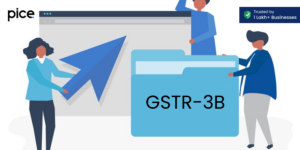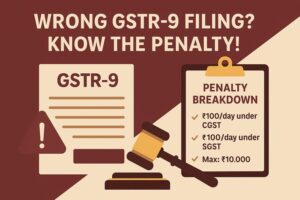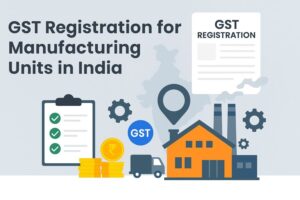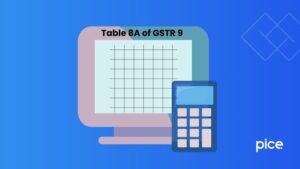Types of Applicable GST for Online Sellers India
- 17 Feb 25
- 10 mins

Types of Applicable GST for Online Sellers India
Key Takeaways
- GST is mandatory for all online sellers, with no exemption threshold.
- CGST/SGST applies for intra-state sales, and IGST for inter-state sales.
- TCS reduced to 0.5%, deducted by e-commerce platforms.
- GST invoices are required, including HSN codes and tax details.
- ITC available, reducing tax burden for sellers.
Goods and Services Tax (GST) has consolidated various older taxes in India, applicable to all goods and services traded. Businesses engaged in the sale of goods or services within India are generally required to register under the GST regime.
This obligation extends to online businesses as well. E-commerce operators, such as Amazon and Flipkart, are entrusted with the responsibility of collecting and remitting GST on behalf of the sellers utilizing their platform. To conduct sales on an e-commerce website, it is mandatory to register for GST for online sellers India.
GST Registration for E-commerce Sellers
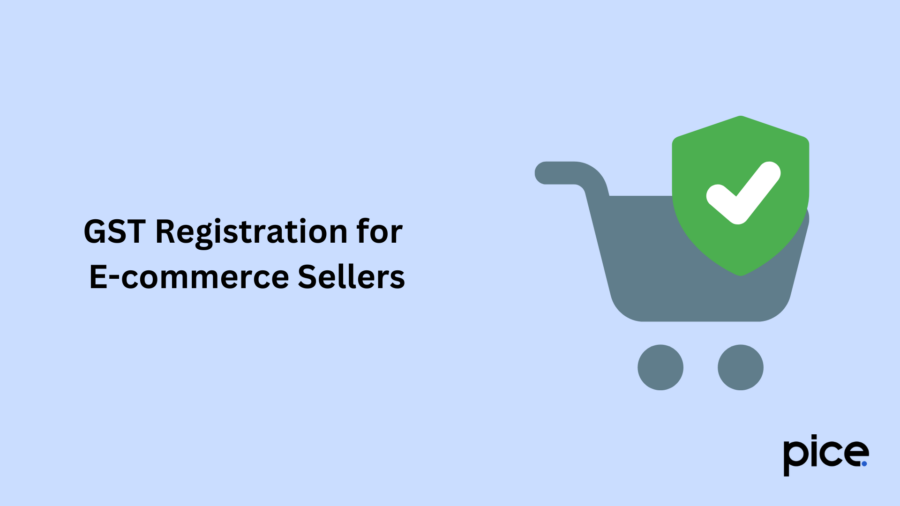
Those who sell products through e-commerce operators must register for Goods and Services Tax (GST) and obtain a GST Identification Number (GSTIN).
It's important to note that standard exemption thresholds—₹40 lakh for regular states and ₹20 lakh for northeastern states—do not apply to online sellers. Registration on e-commerce platforms is only possible for those who are GST-registered.
Here’s a breakdown of the registration requirements based on various scenarios for e-commerce transactions:
- Existing GST Registration
If a seller is already registered under GST, they can maintain their current registration. In such a case, there is no need to notify authorities or make changes. However, sellers registered under the composition scheme must switch to the normal scheme.
- Selling Exempt Goods
Sellers dealing exclusively in exempt goods can register on e-commerce platforms without needing a GSTIN. They do not need to get GST registration.
- Multi-State Business Operations
If a seller conducts sales in multiple states, they must get a GST registration in every state.
- Place of Supply Different from Office Location
If the location of the supply differs from the seller's primary office, they are required to register for GST in the state where the supply takes place.
GST Registration Process for E-Commerce Sellers
If you are an e-commerce seller looking to register for GST, follow these steps:
- Visit the GST Portal
Go to gst.gov.in, navigate dropdown options, go from ‘Services’ to ‘Registration,’ and then click on ‘New Registration.’. - Complete the Registration Form
A new registration form will appear. Choose 'Taxpayer' from the 'I am a' dropdown menu and fill in the required information, including your business's legal name, location, PAN, email address, and mobile number. After entering the captcha, click on 'Proceed.'. - Verify Your Details
You will receive an OTP on your mobile and email. Enter this OTP and click on ‘Proceed’ to continue. - Receive Your Temporary Reference Number (TRN)
A TRN will be generated for you. Click on 'Proceed' again. - Enter Your TRN
Input your TRN along with the captcha and click on 'Proceed.'. - Access Your Saved Application
Your application will be saved with an expiry date of approximately 15 days. Click on ‘Action’ to continue. - Fill Out Your Profile
Complete your profile by providing information in ten fields: Business Details, Authorized Signatory, Promoter, Goods and Services, Authorized Representative, Additional Places of Business, Principal Place of Business, Aadhaar Authentication, State-Specific Information, and Verification. - Select Authorized Signatory
From the dropdown list, choose the name of the authorized signatory. In the 'Place' field, indicate where you are filing the form (e.g., Delhi, Mumbai). - Digital Signature or E-Signature
The application must be digitally signed via a Digital Signature Certificate (DSC) or through e-signing. For e-signing, an OTP will be sent to your Aadhaar-registered mobile number or an e-verification code (EVC) will be sent to your registered mobile number. - Confirmation of Application Submission
A message indicating "Success" will appear once your application is submitted. You will also receive an acknowledgment via SMS and email containing your Application Reference Number (ARN). - Receive Your GSTIN
The registration process typically takes about six days to issue your 15-digit Goods and Services Taxpayer Identification Number (GSTIN) along with the registration certificate in Form GST REG-06.
By following these steps carefully, you can successfully register for GST as an e-commerce seller. You can monitor your application status by selecting 'Track Application Status' on the GST portal.
What Are E-Commerce Sales?

To understand how GST is applied to e-commerce sales, you need to understand how e-commerce sales work. Here’s a brief overview of how e-commerce sales work:
- Seller Registration
To start selling, vendors sign up on various e-commerce operators like Amazon.
- Product Listing
They take photographs of their products and upload these images along with detailed descriptions and pricing information.
- Order Placement
When a buyer decides to purchase a product, they place an order through the platform.
- Shipping and Delivery
Typically, the seller ships the product directly to the buyer or it may be dispatched from the logistics centre managed by the e-commerce platform.
- Fees and Support
The e-commerce platform usually collects a subscription fee or a commission from each sale. Additionally, they assist sellers in areas such as product photography, shipping, and payment processing.
Place of Supply
The place of supply for goods is crucial in determining whether a transaction is classified as intra-state or inter-state. Depending on the classification, the following classifications are applicable:
- State Goods and Services Tax (SGST)
- Central Goods and Services Tax (CGST)
- Integrated Goods and Services Tax (IGST)
If the place of supply is incorrectly stated, it may lead to tax collection by the incorrect jurisdiction. It is important to remember that GST is a destination-based system.
When the place of supply and the supplier's address are within the same state, both Central Goods and Service Tax (CGST) and State Goods and Service Tax (SGST) will apply.
If the place of supply differs from the supplier's address, Integrated Goods and Services Tax (IGST) is applicable.
Here are the 2 of the important provisions regarding the place of supply:
| Supply | Place of Supply |
| When the shipping address and billing address are the same | Address of the buyer |
| When the shipping address and billing address are different | Billing Address (it is presumed that the buyer has taken delivery of the goods and the place of supply will be the buyer's location) |
Here is an illustration of how GST for online sellers India is applied:
- Intra-State Sales: If a person in Mumbai buys a product from an online platform, and the seller is located in Pune, then CGST and SGST will be applicable. This is because the place of supply and the location of the supplier are in the same state.
- Inter-State Supplies: Suppose a person in Kolkata orders a laptop from one of the online marketplaces. The address of the seller is in Mumbai. In this case, the place of supply is Kolkata and IGST will be applicable.
- Sending Goods to a Third Party: Suppose a person living in Mumbai ordered a gift on Amazon and wants it delivered to a relative in Bangalore. The seller is located in Telangana.
In this case, the place of supply will be Mumbai and the person in Mumbai will be considered as the buyer. IGST is applicable in this case.
HSN Code and Relevant GST Rate
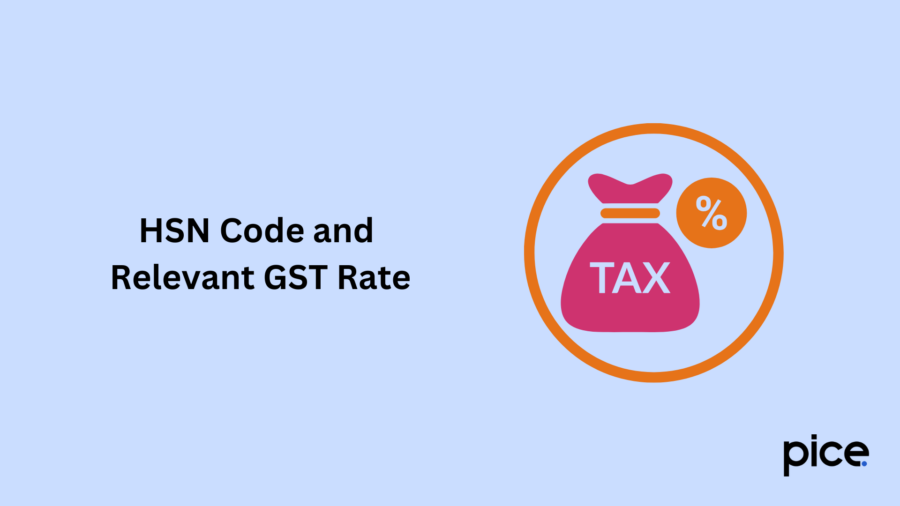
When goods are sold through e-commerce platforms, sellers apply GST according to the rates specific to those goods. Typically, the total price paid by customers includes the GST. The invoice provided by the e-commerce platform will specify both the GST rate and the total GST amount.
The commission that e-commerce businesses collect from sellers comes under HSN code 9985. It has a GST rate of 18%.
Invoicing Requirements for E-commerce GST
You may be wondering about who is responsible for paying GST—the seller or the digital marketplaces.
The clear answer is that it is the seller who bears this responsibility. The e-commerce platform serves merely as an intermediary, facilitating transactions between buyers and sellers. Consequently, since the seller is directly selling the goods to the customer, they must pay the GST.
To comply with GST regulations, sellers are required to issue a GST invoice to the buyer.
Major e-commerce businesses like Amazon and Flipkart offer an invoice furnishing facility for sellers to create invoices directly through their systems. This allows sellers to easily print the invoice and send it along with the product when fulfilling orders.
This invoice must include essential details such as:
- Name, address and GSTIN of the supplier
- Invoice ID
- Date when the invoice was issued
- Name and address of the buyer
- If a buyer is a GST-registered entity, then its GSTIN must also be mentioned.
- HSN code
- A description of the goods and services which have been sold
- Number of goods sold
- Cost after discount
- Applicable GST rate and amount
TCS on E-commerce GST Returns
Businesses selling goods or services online will now pay a smaller tax to the government. This tax, called TCS, is deducted from money they receive from customers. It is important for business compliance and direct tax compliance.
- Previously: The TCS rate was 1%.
- Now: The TCS rate has been reduced to 0.5%.
This change applies to all online sales, whether they happen within the same state or between different states.
Input Tax Credit Under GST
Sellers participating in e-commerce portals can get a credit for the tax they pay on goods and services they buy for their business. It is called an input tax credit (ITC). ITC is claimed on taxable supplies they offer during sales.
Conclusion
GST has made a big change for online businesses. It has created clear and consistent rules for tax rates. For sellers on online marketplaces, understanding and following GST rules is very important. It is not just about the law; GST for online sellers India helps businesses grow and succeed in the long run.
GST has simplified compliance requirements, making it easier to do business and creating a fairer playing field. By making tax rules easier to follow and setting clear guidelines for online sales, GST has helped the online industry grow and compete globally.
💡If you want to streamline your payment and make GST payments via credit card, consider using the PICE App. Explore the PICE App today and take your business to new heights.
 By
By 






